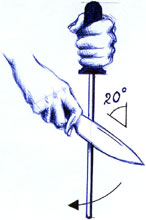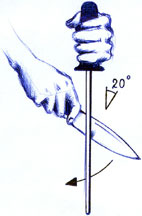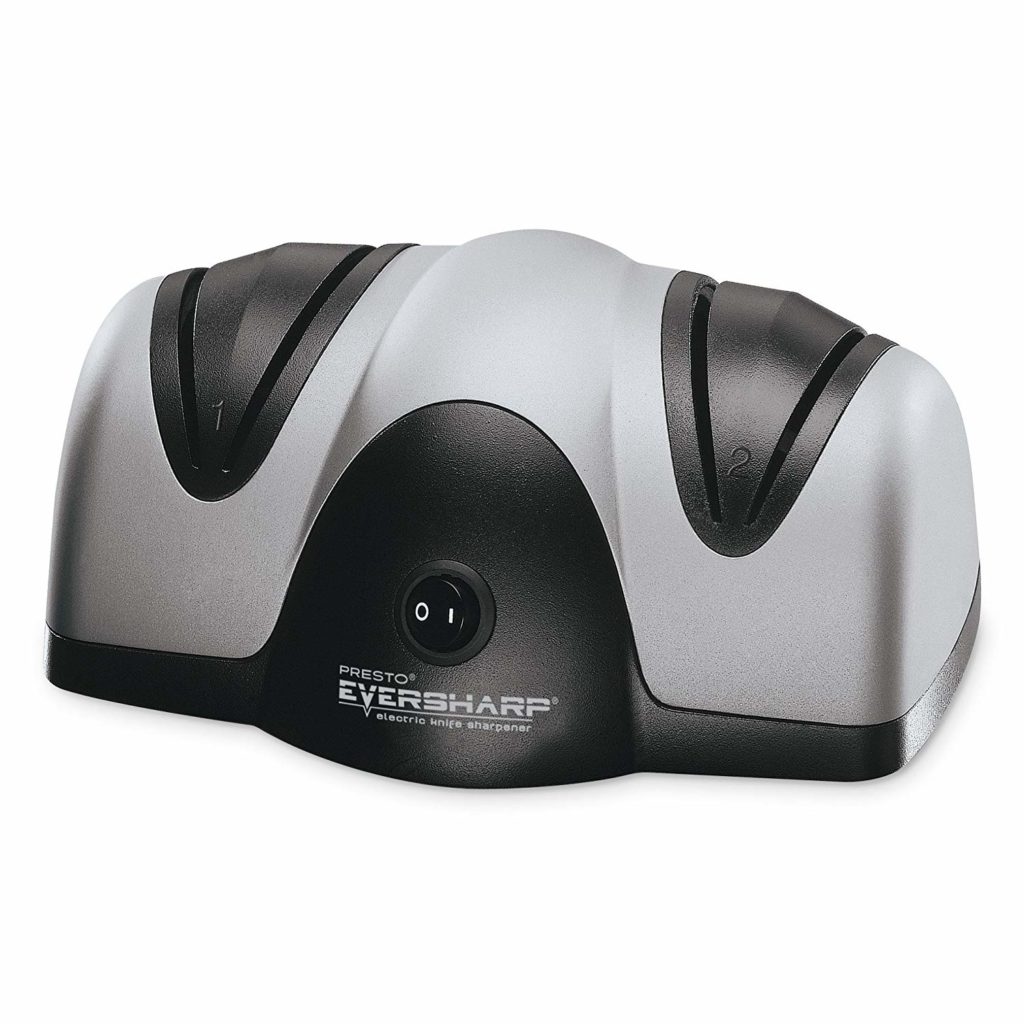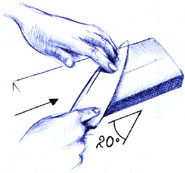1. Tips about using a honing steel
To properly realign the edge of your kitchen knife, it is best to place the tip of the honing steel on a cutting board or on a kitchen towel holding the rod vertically. This will give you a vertical line and will prevent slipping.
Hold the knife in your strong hand and place the knife blade at the top of the steel at an angle of approximately 25 degrees. Slowly draw the knife down the length of the steel, pulling the knife back so the entire blade, from base to tip, moves against the steel, as if you were slicing off pieces of the steel. Repeat on the other side. Remember, the secret is to be gentle; don’t push too hard. Do this five to ten times, then rinse the knife off and dry immediately. Make sure you sharpen each side of the blade the same number of times in order to retain the knife’s balance.


It is important to maintain the angle of approximately 25 degrees and to run the full length of the cutting edge along the steel from the handle to the tip of the knife. The speed of movement is not so important.
In addition, always clean your honing steel before using it. The grooves that run the length of the rod can become clogged with grease and food, which will reduce the effectiveness of the steel. If you can no longer feel the grooves on the steel, it is time to replace it.
Use a sharpening steel at least 10 inches long, so that you are able to hone your bigger kitchen knives as well.
2. Tips about using manual and electric knife sharpeners

Place the sharpener on a work surface and hold it securely with one hand. Draw the knife blade through the slots of the sharpener with the other hand. Since manual and electric knife sharpeners vary drastically, be sure to follow the operating instructions to the letter. If you aren’t careful enough, electric knife sharpeners can grind away more steel than you may have intended, limiting the life of your knife.
The following video is about Chef’s Choice knife sharpener – one of the top brands on the market. As you will see on the video, it is best to select a sharpener with several slots, angular guides and diamond abrasives. Diamond is very hard, sharpens aggressively and removes metal without upsetting the temper of the knife blade.
3. Tips about using a sharpening stone
Place a damp kitchen towel on the countertop and put the sharpening stone on top of the towel. This will help prevent the stone from slipping. Grip your knife by the handle with one hand and hold it at an angle of approximately 25 degrees from the stone. Use your free hand to apply even pressure to the blade of the knife and carefully draw the entire length of the blade over the stone. Turn the knife over and repeat the process. Make sure you maintain the angle of approximately 25 degrees, and always use an equal number of passes for each side. Keep repeating this process until the knife is sharp. When you’re done, carefully rinse the knife off and dry immediately.

To sharpen your kitchen knives well, use sharpening stones with different grades of coarseness, as with the slots of the manual and electric knife sharpeners above.
Thank you for this guide! I like how you included a video tutorial as well. I’m planning to get an electric knife sharpener soon. Any recommendations on the best brands?
Chef’s Choice knife sharpener is one of the top brands on the market. I suppose you already know that :)